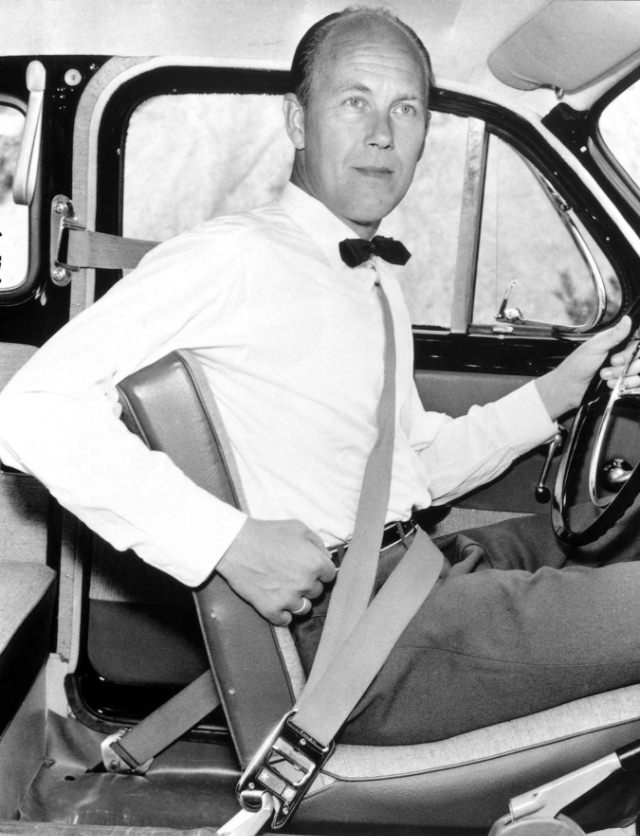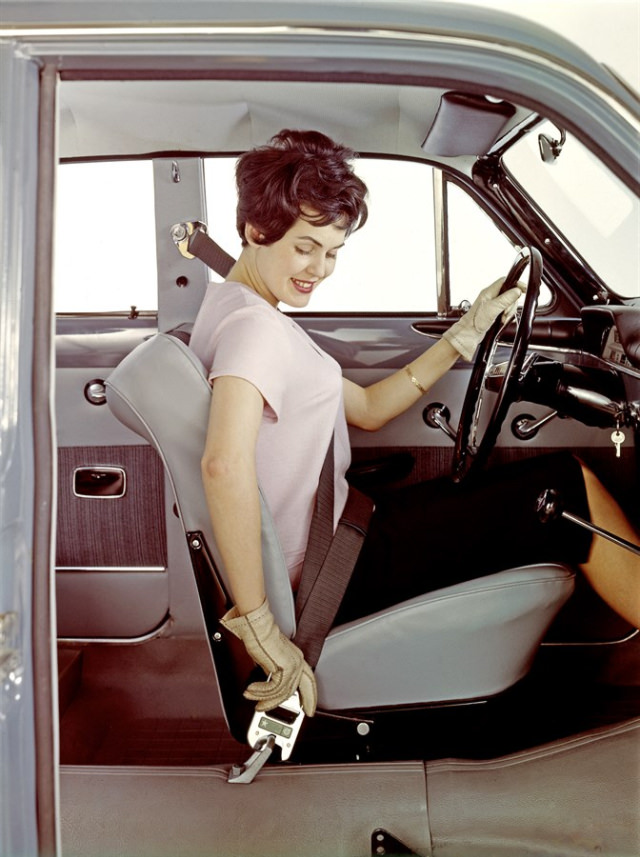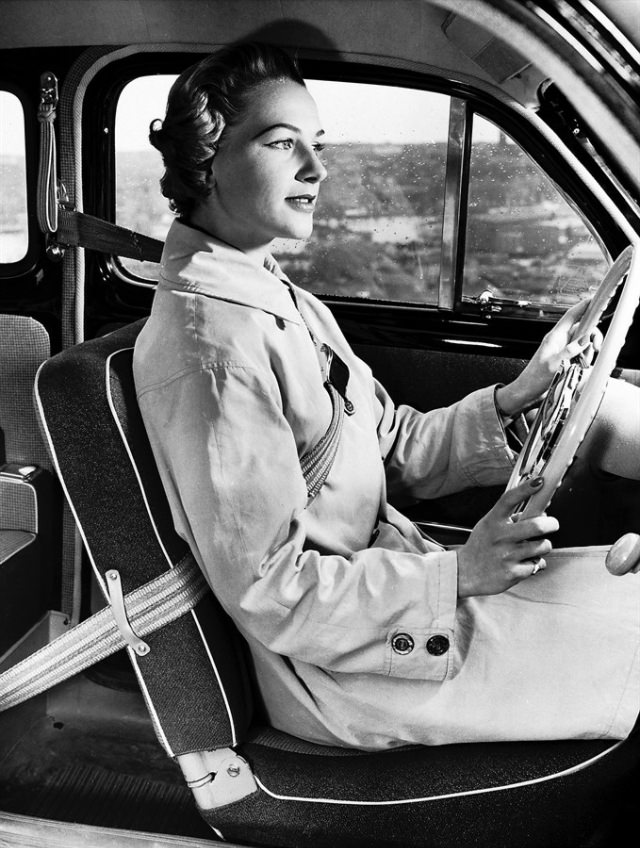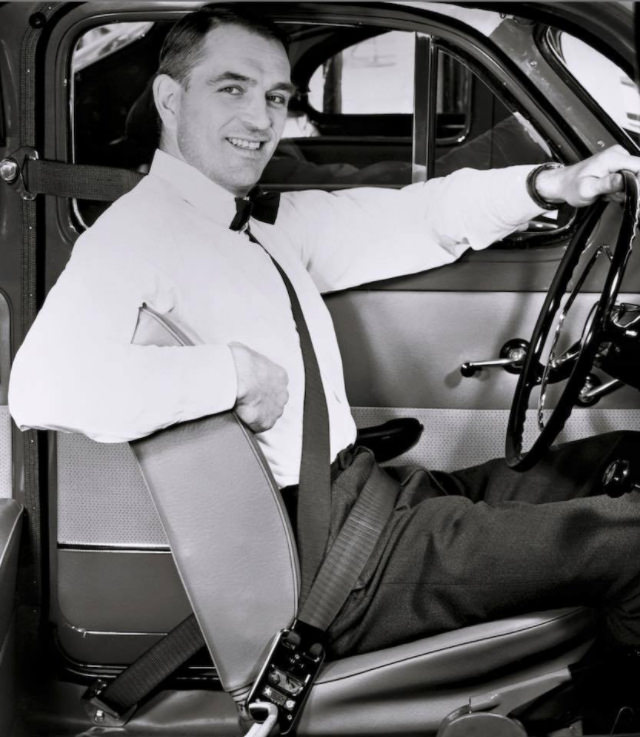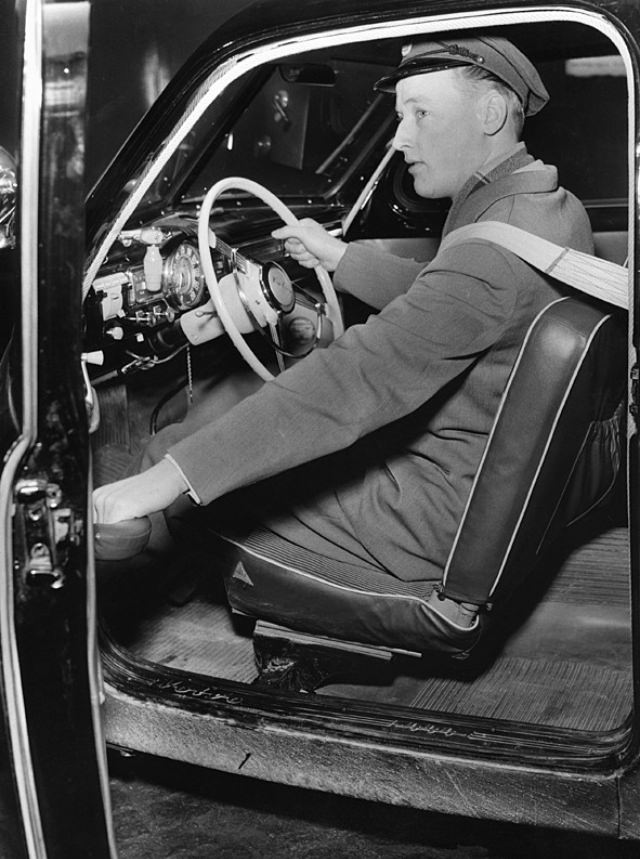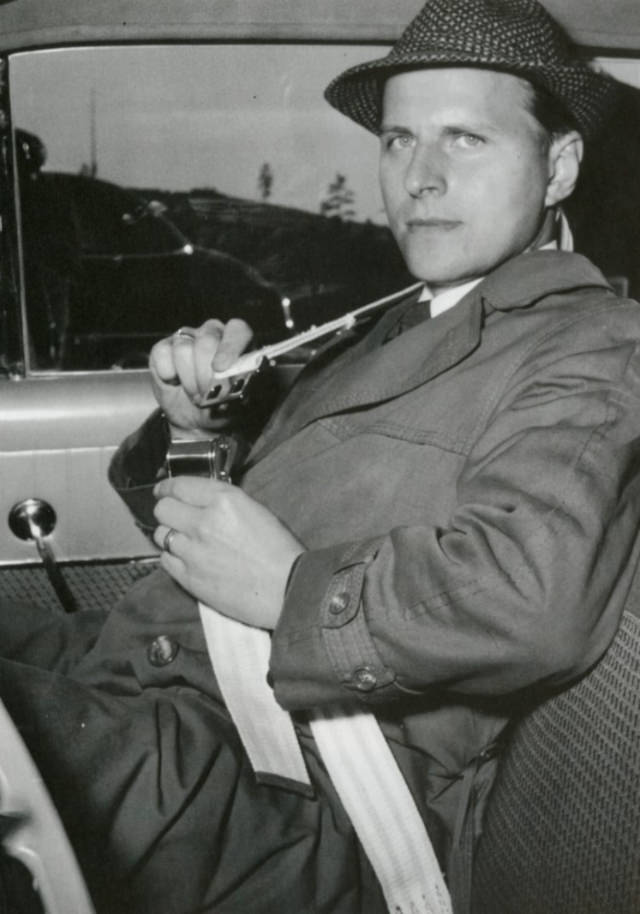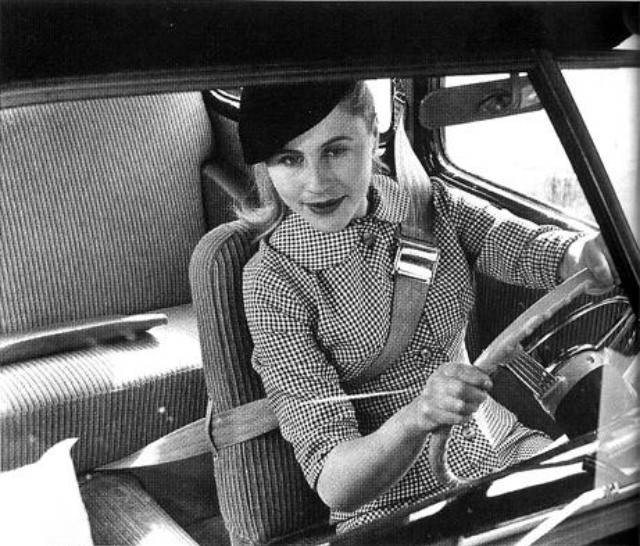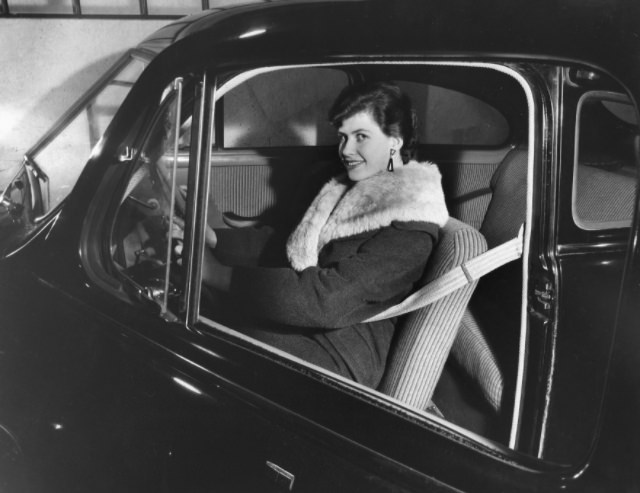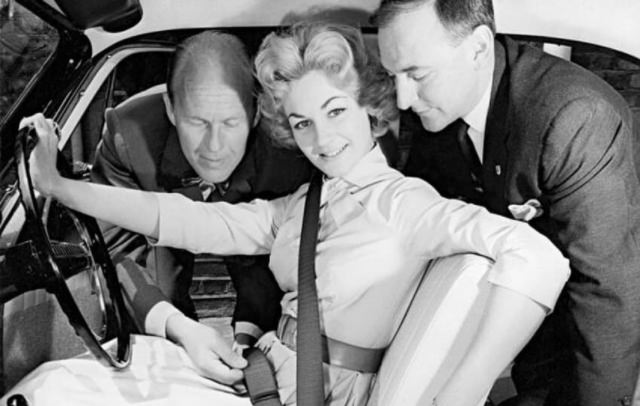Volvo engineer Nils Bohlin developed the car safety belt into its current design in the 1950s. Before that, there were different types of belts. During the 1930s, US doctors began to demand that cars be equipped with safety belts. Lap belts with two points were the most common, but three-point safety belts were also. They didn’t adequately protect their users, especially at high speeds.
The engineers at Volvo had developed several protective systems in the latter half of the 1950s to prevent an occupant from hitting interior components during a collision or to lessen the severity of such consequences. There was also a collapsible steering column, padded dashboard, and diagonal two-point seat belt attachment points. Although Volvo vehicles have already been fitted with anchors for two-point front safety belts since 1957, early tests of a third “diagonal belt” did not meet the company’s safety requirements. Inconveniently positioned buckles at the ribcage damaged soft organs rather than protecting them. The two-point belt led to the death of a relative of Volvo president Gunnar Engellau. Therefore, Bohlin was given the task of developing a better alternative. Bolin realized that his upper and lower bodies had to be adequately secured, with one belt across the chest and the other across the hips. His biggest challenge was to develop a buckling system that was both effective and easy to use. Bohlin wanted a belt he could put on with just one hand.
His work led to a patent application for Bohlin’s three-point belt in 1958. Bohlin’s design, which he considered most important for a vehicle’s safety belt, included both a hip or lap belt and a diagonal belt across the upper body, which was positioned physiologically appropriate and connected at a low anchorage point beside the seat. In the belt geometry, the peak pointed downward towards the floor. This design allowed the belt to remain in place when the belt was under load. Bohlin’s V-shaped belt differed from the previous three-point Y-type belt because of the anchorage points. Bohlin’s belt demonstrated geometrical perfection rather than being a cutting-edge innovation. Volvo made Bohlin’s patent available to all automakers immediately after developing the three-point design, so the solution and benefits spread throughout the world. Bohlin led Volvo to ever-safer occupant protection in Volvo vehicles during his time at the company. As soon as he recognized the need for side-impact protection, he began working on what eventually became the patented Side Impact Protection System (SIPS), which was one of the first in the world.


